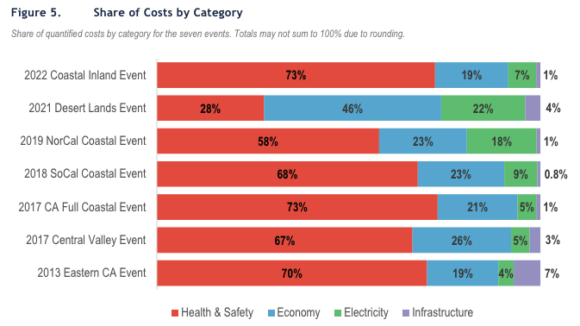The cumulative cost of the seven heat events in California in the past decade amounted to $7.7 billion in losses, a new report shows.
The analysis from California Insurance Commissioner Ricardo Lara’s office is the result of legislation he sponsored in 2022. It quantifies the uninsured and insured costs of seven recent extreme heat events across the state.
This analysis creates a framework to measure the costs of seven significant extreme heat events over the past decade.
Some insurance coverage is available to cover costs connected to extreme heat, such as health coverage, workers compensation and crop insurance.

The report exposes gaps in traditional insurance coverage for heat-related losses, and it calls for the development of innovative insurance mechanisms and investments in adaptation and resilience.
Findings of the report include:
- The preliminary estimates on the cumulative cost of the seven studied heat events amounted to $7.7 billion, affecting nearly the entire population of California.
- Adverse health outcomes disproportionately impacted Black, Hispanic and Native American communities, with significant mortality rates among older adults and heat-related illnesses among younger populations.
- Labor productivity losses ranged between $7.7 million and $210 million per event due to extreme heat, with substantial uninsured wage losses.
- Power outages during heat events resulted in substantial economic impacts, with the 2022 Coastal Inland event incurring the highest costs at $230 million.
- Infrastructure costs due to heat-related damage repair and delays ranged from $3.8 million to $35 million per event, predominantly affecting roads and rails.
The seven events met certain criteria, including having occurred in the last two to 11 years, the event was widespread geographically and socioeconomically and it caused or was associated with extreme heat effects (on health, the economy, infrastructure, governance).
The events were: a nine-day heat event in 2013 in Eastern California that effected more than 3 million people; an 11-day event in 2017 in the Central Valley that affected 8.6 million people; a 13-day event in 2017 along coastal areas that affected 28.8 million people; a seven-day event in 2018 in Southern California’s coastal area that affected 18.7 million people; a seven-day event in 2019 in Northern California’s coastal area that affected 5.8 million people; an eight-day event in 2021 in the desert area that effected 1.5 million people; a 14-day event in 2022 in the Coastal and inland area that affected 34.2 million people.





















 Better Results Ahead? Technology Improvements in Commercial Fleets
Better Results Ahead? Technology Improvements in Commercial Fleets  The Workplace Is Changing; So Are the Risks for Employment Discrimination Claims
The Workplace Is Changing; So Are the Risks for Employment Discrimination Claims  How We’re Doing It: Boosting Corporate Culture and Customer Experience
How We’re Doing It: Boosting Corporate Culture and Customer Experience  No Insurance Needed, Amish Quickly Repair Tornado Damage in Michigan and Indiana
No Insurance Needed, Amish Quickly Repair Tornado Damage in Michigan and Indiana 